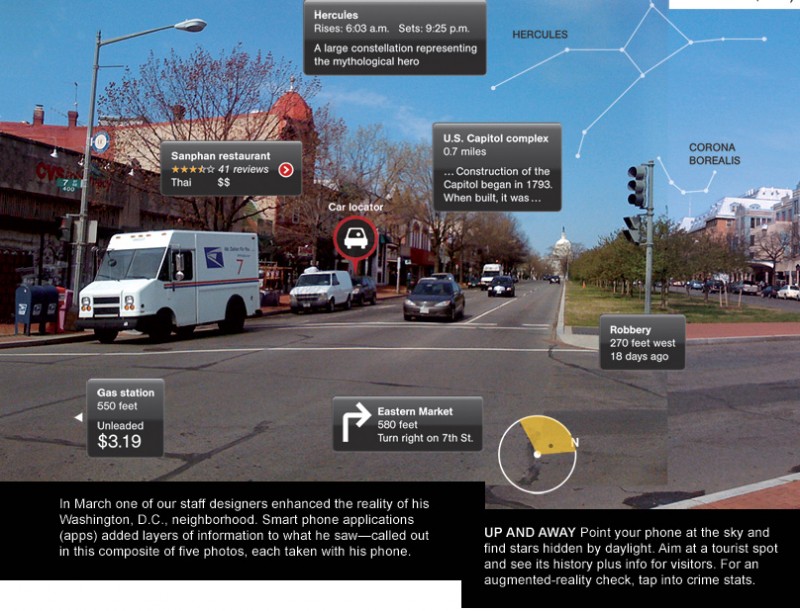The travelsphere hasn’t reported on “augmented reality” all that much lately. Here’s the lowdown if you haven’t heard:
Vagabondish is reader-supported. When you buy through links on our site, we may earn a small affiliate commission. Read our disclosure.
Augmented reality (AR) is a term for a live direct or indirect view of a physical real-world environment whose elements are augmented by virtual computer-generated imagery. It is related to a more general concept called mediated reality in which a view of reality is modified (possibly even diminished rather than augmented) by a computer. As a result, the technology functions by enhancing one’s current perception of reality.
National Geographic posted this today as a reminder of the wonderous technological things to come. It’s all perhaps best explained with this photo below:
For travelers, it’s a technological breakthrough almost on par with the internet itself. Imagine holding your phone up to the view physically in front of you and instantly being able to view various “meta” data about your location. Imagine moving through a foreign city nearly as comfortably as you move through your own. No matter where you stand, your smartphone will be able to tell you all of the pertinent facts about your present location in real-time: who’s Twittering on that block over there, where the cheapest gelato is nearby, and when exactly was that statue designed?
NatGeo predicts that “one day it’ll be as routine as browsing the Web.” But think about it: the individual moving parts to build a device like this already exist: GPS-enabled smartphones (or glasses even!), near-ubiquitous WiFi (or 3G cell networks) and smartphone chips fast enough to process all of this data in real-time. I predict that that “one day” is coming very, very soon.
The big question of course: all of this technology certainly makes navigating our world easier … but is that necessarily better?



